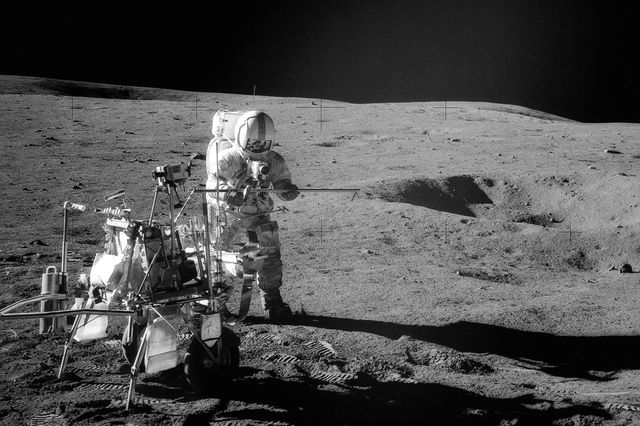AUCLA-led research team reports that the moon is at least 4.51 billion years old, or 40 million to 140 million years older than scientists previously thought.
The findings — based on an analysis of minerals from the moon called zircons that were brought back to Earth by the Apollo 14 mission in 1971 — are published Jan. 11 in the journal Science Advances.
The moon’s age has been a hotly debated topic, even though scientists have tried to settle the question over many years and using a wide range of scientific techniques.

“We have finally pinned down a minimum age for the moon; it’s time we knew its age and now we do,” said Mélanie Barboni, the study’s lead author and a research geochemist in UCLA’s Department of Earth, Planetary and Space Sciences.
The moon was formed by a violent, head-on collision between the early Earth and a “planetary embryo” called Theia, a UCLA-led team of geochemists and colleagues reported in 2016.
The newest research would mean that the moon formed “only” about 60 million years after the birth of the solar system — an important point because it would provide critical information for astronomers and planetary scientists who seek to understand the early evolution of the Earth and our solar system.
That has been a difficult task, Barboni said, because “whatever was there before the giant impact has been erased.” While scientists cannot know what occurred before the collision with Theia, these findings are important because they will help scientists continue to piece together major events that followed it.
It’s usually difficult to determine the age of moon rocks because most of them contain a patchwork of fragments of multiple other rocks. But Barboni was able to analyze eight zircons in pristine condition. Specifically, she examined how the uranium they contained had decayed to lead (in a lab at Princeton University) and how the lutetium they contained had decayed to an element called hafnium (using a mass spectrometer at UCLA). The researchers analyzed those elements together to determine the moon’s age.
“Zircons are nature’s best clocks,” said Kevin McKeegan, a UCLA professor of geochemistry and cosmochemistry, and a co-author of the study. “They are the best mineral in preserving geological history and revealing where they originated.”
The Earth’s collision with Theia created a liquefied moon, which then solidified. Scientists believe most of the moon’s surface was covered with magma right after its formation. The uranium–lead measurements reveal when the zircons first appeared in the moon’s initial magma ocean, which later cooled down and formed the moon’s mantle and crust; the lutetium–hafnium measurements reveal when its magma formed, which happened earlier.
“Mélanie was very clever in figuring out the moon’s real age dates back to its pre-history before it solidified, not to its solidification,” said Edward Young, a UCLA professor of geochemistry and cosmochemistry and a co-author of the study.
Previous studies concluded the moon’s age based on moon rocks that had been contaminated by multiple collisions. McKeegan said those rocks indicated the date of some other events, “but not the age of the moon.”
The UCLA researchers are continuing to study zircons brought back by the Apollo astronauts to study the early history of the moon.
Co-authors of the Science Advances study are Patrick Boehnke, a former UCLA graduate student who is now a University of Chicago postdoctoral scholar; Christopher Keller, a UC Berkeley postdoctoral scholar; Issaku Kohl, a UCLA research geochemist; and Blair Schoene, associate professor of geosciences at Princeton University.
The research was funded by NASA, and Barboni received support from the Swiss National Science Foundation.
Quelle: UCLA

